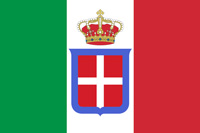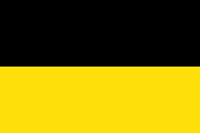World War I (1914-1918)

Third Battle of the Isonzo
The Third Battle of the Isonzo was fought from 18 October through 3 November 1915 between the armies of Italy and Austria-Hungary.
Background
After roughly two and a half months of reprieve to recuperate from the casualties incurred from frontal assaults from the First and Second Battle of the Isonzo, Luigi Cadorna, Italian The Kingdom of Italy was a state that existed from 1861, when Victor Emmanuel II of Sardinia was proclaimed King of Italy, until 1946. The state resulted from a decades-long process, the Risorgimento, of consolidating the different states of the Italian Peninsula into a single state. That process was influenced by the Savoy-led Kingdom of Sardinia, which can be considered Italy's legal predecessor state. commander-in-chief, understood that artillery played a fundamental role on the front and brought the total number to 1,200 pieces.
The Kingdom of Italy was a state that existed from 1861, when Victor Emmanuel II of Sardinia was proclaimed King of Italy, until 1946. The state resulted from a decades-long process, the Risorgimento, of consolidating the different states of the Italian Peninsula into a single state. That process was influenced by the Savoy-led Kingdom of Sardinia, which can be considered Italy's legal predecessor state. commander-in-chief, understood that artillery played a fundamental role on the front and brought the total number to 1,200 pieces.
The main objectives were to take the Austro-Hungarian bridgeheads at Bovec (Plezzo in Italian) and Tolmin, if possible the town of Gorizia. Cadorna's tactic, of deploying his forces evenly along the entire Soča (Isonzo), proved indecisive. The Austro-Hungarians Austria-Hungary, often referred to as the Austro-Hungarian Empire, the Dual Monarchy, or Austria, was a constitutional monarchy and great power in Central Europe between 1867 and 1918. Austria-Hungary was one of the Central Powers in World War I, which began with an Austro-Hungarian war declaration on the Kingdom of Serbia on 28 July 1914. took advantage of the relatively small areas of attack to concentrate their firepower on those areas.
Austria-Hungary, often referred to as the Austro-Hungarian Empire, the Dual Monarchy, or Austria, was a constitutional monarchy and great power in Central Europe between 1867 and 1918. Austria-Hungary was one of the Central Powers in World War I, which began with an Austro-Hungarian war declaration on the Kingdom of Serbia on 28 July 1914. took advantage of the relatively small areas of attack to concentrate their firepower on those areas.
Battle
Thanks to extensive artillery barrages, the Italians were able to advance to Plave (Plava in Italian) near Kanal ob Soči, beneath the southern end of the Banjšice Plateau (Bainsizza), and on Mount San Michele on the Kras plateau in an attempt to outflank those forces defending Gorizia. The plateau near San Michele was the scene of heavy attacks and counterattacks involving the Italian Third Army and Austro-Hungarian reinforcements from the Eastern and Balkan fronts under the command of Svetozar Boroević; both sides suffering heavy casualties.
Thanks to the low profile held by Boroević's forces, the Austrians were able to hold their positions with heavy casualties, inferior however to those of the Italians. This battle showed Boroević's tactical brilliance despite the limited scope of the front.
The lull in action lasted barely two weeks after which the Italian offensive started anew.
HISTORY

RESOURCES
This article uses material from the Wikipedia articles "World War", "World War I", and "Third Battle of the Isonzo", which is released under the Creative Commons Attribution-Share-Alike License 3.0.
© Stories Preschool. All Rights Reserved.










